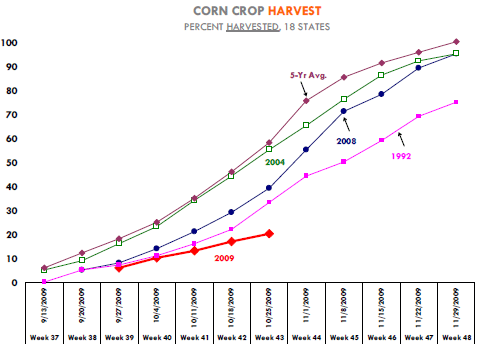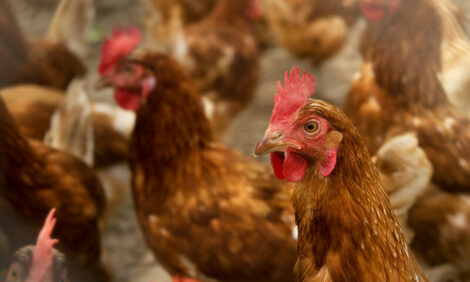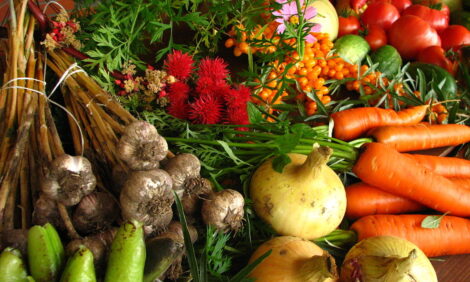



CME: Current Grain Market Situation Discouraging
US - The latest USDA crop progress report showed that US corn producers continue to run well behind year ago and five year average levels in harvesting the current crop, write Steve Meyer and Len Steiner.As of 25 October, only 20 per cent of the US corn crop had been harvested, this compares to 37 per cent a year ago and 58 per cent during the comparable five year average. Corn harvest progress is also behind 1992 levels, a year in which delays and a cool, wet weather caused harvest to extend in some cases all the way to January. Much can change in the next few weeks but a number of factors are contributing to the current slow corn harvest. The main impediment to this point is the high moisture content of corn being harvested.
The wetter the corn harvested, the more expensive it is to dry it down. It appears that many producers are calculating the relative cost of leaving the crop dry down in the field (the longer it sits there, the larger field losses) versus the cost of harvesting a crop that is too wet and therefore requires more energy to dry it down. Compounding the problem is the sheer size of the current corn crop. The latest USDA estimates pegged the current crop at 13.018 billion bushels, only slightly lower than the all time record produced in the 2007 harvest (13.038). Drying capacity has to be a concern. Still the main issue remains the cost of drying a high moisture crop given current energy costs. Yes, corn prices are up but so is the price of fuel, with spot propane prices currently past $1 per gallon.
We do not pretend to be experts in the intricacies of corn production but some of the information available in the public space on the current corn situation is not encouraging. Trade and academic reports indicate that producers could afford to lose several bushels in terms of potential production losses in order to drop the moisture content by letting the crop dry out in the field. A Ohio State corn budget report indicated that it costs 0.02 gallons of liquid propane to reduce moisture content by 1 per cent. So each producer can quickly calculate what it would take to dry out a crop that by some estimates is 5-7 per cent, in some cases even more, wetter than normal.

The bottom line of all the conversation about the current corn crop is that delays in harvesting may affect final production figures and more importantly producer costs. The delays will also impact the necessary field work that needs to be done in preparation for next spring’s plantings. Some producers simply will not be able to do enough field work this fall and delay it for next spring.
For livestock and poultry producers, the current developments in the grain market are discouraging. There was some hope that moderating feed costs could allow producers to bring a small margin back in the business. Out front corn futures are near or above $4 per bushel, a price that could continue to move up given the harvest uncertainties and prospects of an even weaker dollar and all that implies for export demand and energy prices.











